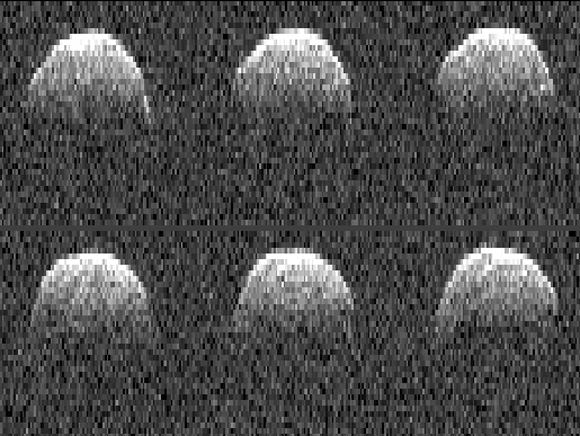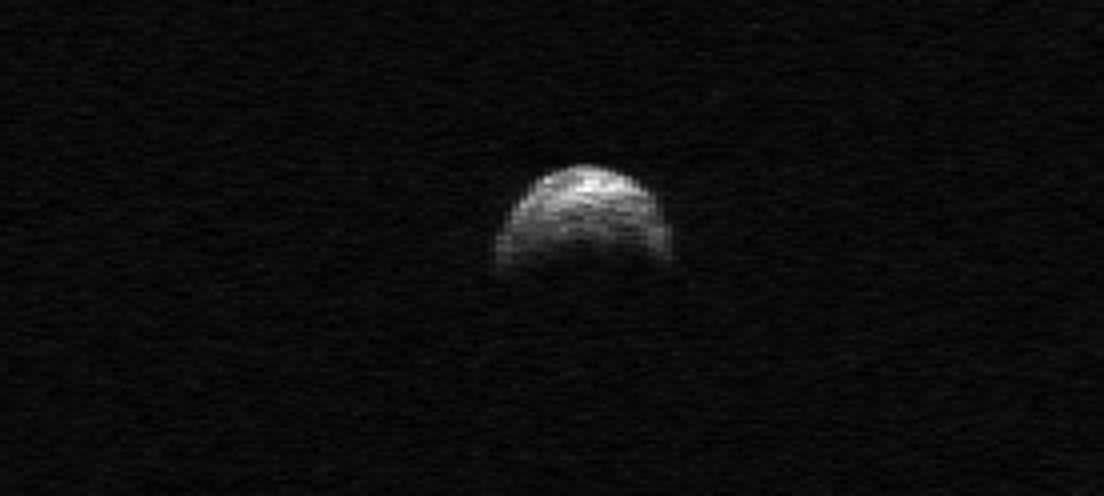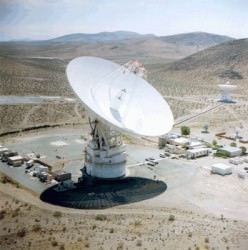The physical force of sunlight on a moving asteroid has been measured by NASA scientists, providing information on how to better plot these Earth-passing worlds’ future paths.
First proposed by a 19-century Russian engineer, the Yarkovsky effect is the result of an object in space absorbing radiation from the Sun and emitting it as heat, thus creating a slight-but-measurable change in its movement (thanks to Newton’s first law of motion.)
By observing the 1999, 2005 and 2011 close passes of asteroid 1999 RQ36 with the Arecibo and Goldstone radar telescopes, astronomers were able to determine how much the trajectory of the half-kilometer-wide asteroid had changed.
The researchers’ findings revealed that RQ36 shifted by 160 km – about 100 miles – over the course of those 12 years. That deviation is attributed to the Yarkovsky effect. A miniscule force in and of itself, over time it has the ability to move entire worlds (albeit relatively small ones.)
“The Yarkovsky force on 1999 RQ36 at its peak, when the asteroid is nearest the Sun, is only about a half ounce — about the weight of three grapes on Earth,” said Steven Chesley of NASA’s Jet Propulsion Laboratory in Pasadena “Meanwhile, the mass of the asteroid is estimated to be about 68 million tons. You need extremely precise measurements over a fairly long time span to see something so slight acting on something so huge.”
Using measurements of the distance between the Arecibo Observatory in Puerto Rico and RQ36 during its latest pass in 2011 – a feat that was compared by team leader Michael Nolan to “measuring the distance between New York City and Los Angeles to an accuracy of two inches” – Chesley and his team were able to calculate all the asteroid’s near-Earth approaches closer than 7.5 million km (4.6 million miles) from the years 1654 to 2135. 11 such passes were found.
In addition, observation of 1999 RQ36 with NASA’s Spitzer Space Telescope found it to have about the same density as water – that’s light, for an asteroid.
Most likely, RQ36 is a “rubble-pile” form of asteroid, composed of a conglomeration of individual chunks of material held together by gravity.
These findings will be used by NASA scientists to help fine-tune the upcoming OSIRIS-REx mission, which is scheduled to launch in 2016 to rendezvous with 1999 RQ36 and return samples to Earth in 2023. Being a loose collection of rocks is expected to aid in the spacecraft’s sample retrieval process.
The findings were presented on May 19 at the Asteroids, Comets and Meteors 2012 meeting in Niigata, Japan. Read more here.
(Top image: series of radar images of asteroid 1999 RQ36 were obtained by NASA’s Deep Space Network antenna in Goldstone, Calif. on Sept 23, 1999. Credit: NASA/JPL-Caltech)




